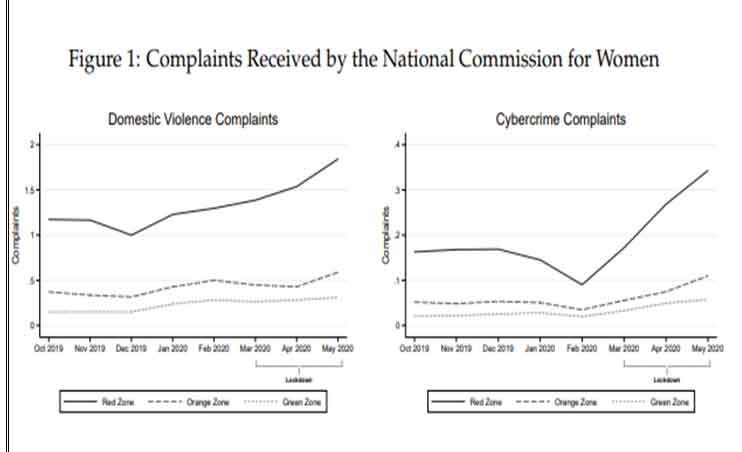Will Morrow
At the beginning of the month, the Macron government quietly released far-reaching changes to its police intelligence guidelines, to facilitate the mass documentation of the political views of the French population.
The changes were enacted via a series of executive decrees published on December 4. They were not accompanied by any press statement or public debate, and were initially revealed only due to an article by the French data and technology blog Next INpact. The decrees significantly enlarge the conditions in which police can create detailed personal files on individuals and the information that these files can contain.
As of November, according to the interior ministry, these police files—which are separate from those maintained by the intelligence agencies—held the detailed personal information of more than 60,000 people across the country.
This is now to be further expanded. Previously, the guidelines referred to the collection and analysis of information about individual “persons.” This has been replaced to include both “physical” and “moral persons”—the latter being a definition in French law for a legal association—as well as “groupings.”
The term “grouping” is so vague that it would undoubtedly encompass large social media groups and protest movements, including the “yellow vest” protests against social inequality, which were organized on Facebook groups of up to 300,000 people. The decree states that data can be collected on “physical persons holding or having held direct and non-fortuitous relations with the [association] or grouping...”
The criteria for who is considered a “risk” has also been expanded. The previous version of the law referred to individuals who threatened “public security.” The new version refers to threats to “public security or the security of the state,” to “the integrity of the territory or to institutions of the Republic,” and to “the fundamental interests of the nation.” The latter is defined separately as including “the major industrial, economic and scientific interests of France” and its “foreign policy.”
The information that police are instructed to document has also been changed. Previously, the law referred to the documentation of the “political, philosophical, religious and trade union activities” of the individual in question. This has been changed to “political opinions, philosophical and religious convictions, or trade union membership.” Police are also to collect the social media activities of those who are targeted.
Significantly, as noted by the liberties defense association Quadrature Du Net, the decree also removed a clause which explicitly precluded the use of the police files for large-scale facial recognition.
The Macron government is building up a police state to suppress the mass opposition in the working class to social inequality, austerity, and the right-wing militarist policies of the political establishment. Last year, the Macron government approved similar changes to the strategic guidelines of the national intelligence and counterterrorism agency, stating that the role of the intelligence agencies is to counter “subversive movements” and “insurrectional violence” in the population.
In 2014, the “National Intelligence Strategy” listed five areas of focus: terrorism, espionage and economic interference, the proliferation of weapons of mass destruction, cyberattacks and organized crime. The new version included a new category, “Anticipation of crises and the risk of major ruptures.” Under the headline “Violent subversion,” it stated that “the growing strength of movements and networks of a subversive character constitutes a factor of crisis that is all the more preoccupying because they are aimed at weakening, and even destroying, the foundations of our democracy and the republican institutions through insurrectional violence.”
These changes underscore the fact that the vast expansion of police powers and evisceration of democratic rights of the population, introduced under the banner of the “War on Terror” over the past two decades, are directed against social opposition in the working class. Speaking last Thursday on France Info, Interior Minister Gérald Darmanin declared that the new police documentation rules were required because “opinions and political activities connected to extremist parties, those who call precisely for separation, for revolution, must be known by the intelligence agencies.”
The Socialist Party has criticized the latest changes knowing that its vote would not be required to enforce them. Its spokesman Boris Vallaud called for the law’s withdrawal. But the Socialist Party has played a leading role in building up the police’s powers, enacting a two-year state of emergency beginning in 2015 under Francois Hollande and suspending democratic rights.
A raft of police-state laws are now being pushed forward by Macron. On November 24, the National Assembly passed Macron’s “global security” law, which criminalizes the filming of police officers, among other anti-democratic changes. The day before, police carried out a violent rampage against a peaceful refugee encampment in the center of Paris.
In the face of continuing mass protests, including a demonstration of hundreds of thousands on November 28, Macron has temporarily withdrawn the most controversial article of the law, but has pledged to “re-write” it. Moreover, other changes in the “global security” law, including codifying the use of drones to spy on every person who attends a protest, remain in place.
Pointing to the significance of these simultaneous changes, Quadrature de Net noted in its report, “If, via the global security law, all protesters can be filmed at a protest, and … a large portion of them can be identified via facial recognition technology, the [police filing systems] have already prepared for them a complete system for centralizing all the information concerning them, without this surveillance ever being authorized nor weighed by a judge.”
At the same time, the Macron government is moving to pass its “anti-Separatism” law, renamed to the “respect for the principles of the Republic,” which will provide the state with further powers to dissolve legal associations and organizations, including political parties, on the grounds that they are declared to be hostile to the Republic.
The anti-Separatism law is being brought forward in the context of an extreme-right anti-Muslim campaign throughout the media and the political establishment. In the wake of the terrorist killing of Paris school teacher Samuel Paty last month, Interior Minister Darmanin has announced the closure of over 75 mosques, the dissolution of dozens of Muslim associations, and denounced the presence of halal and other international foods in supermarket aisles. The anti-Muslim campaign is being used to promote and legitimize the neo-fascists, divide the working class along religious lines and justify attacks on the democratic rights of the population.
In France and internationally, bourgeois democracy is rotten and breaking apart. In the United States, Trump continues to defy the results of the presidential election and declare his determination to remain in office. In Germany, the fascistic Alternative for Germany has been elevated to the official opposition in parliament. The response of the ruling class to the growth of strikes and left-wing demonstrations in the working class internationally since 2018 is to turn toward dictatorship.
The ruling elite is preparing for an explosion of social opposition to its criminal response to the pandemic, which has needlessly permitted millions to die, to protect corporate profits that would otherwise be impacted by a prolonged economic lockdown. The response of the working class must be to develop its own struggle for political power, independent of all the capitalist parties, to establish workers’ governments and socialism.

